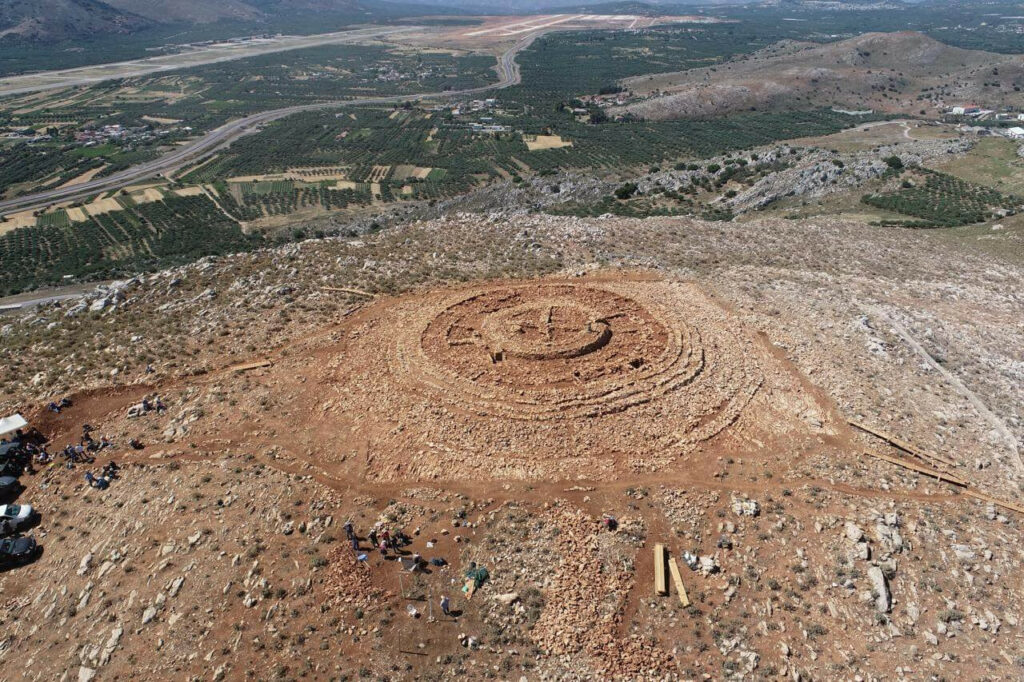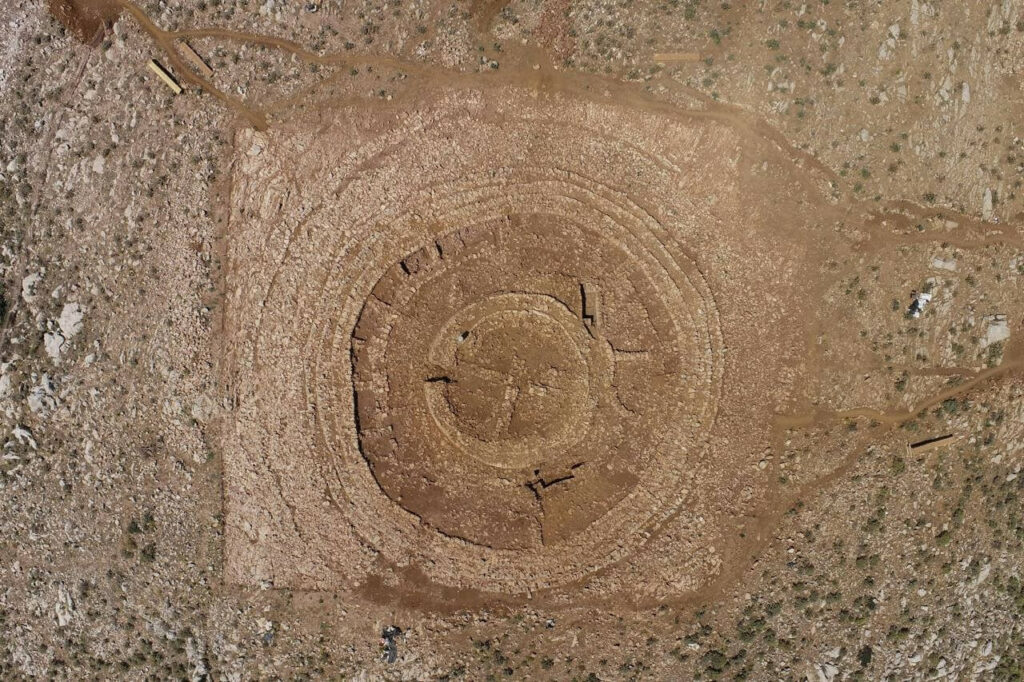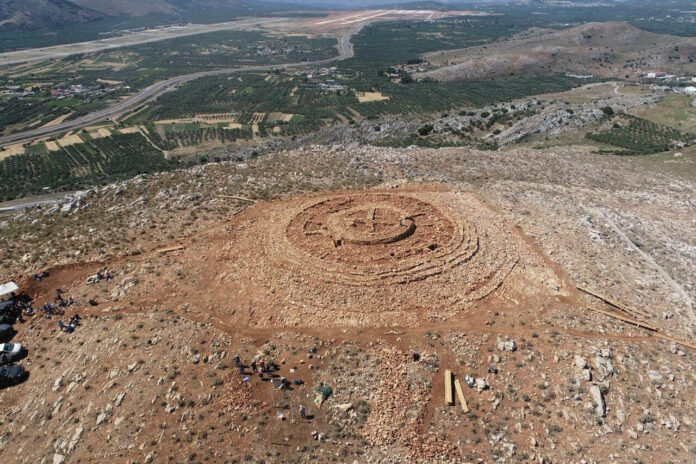An Unprecedented Find in Minoan Archaeology

Ongoing excavations on Papoura Hill, near the construction site of a new airport runway in Kastelli, have unearthed a remarkable architectural complex. This circular structure, unique in Minoan archaeology, boasts a diameter of approximately 48 meters and covers an area of around 1800 square meters.
Architectural Intricacies

The monumental complex consists of eight concentric stone rings, each with an average thickness of 1.40 meters and a maximum estimated height of 1.7 meters, arranged on different elevation levels. At the center lies a circular building (Zone A) with a diameter of 15 meters, constructed with corbelled masonry and divided into four quadrants. Surrounding Zone A is a second main zone (Zone B), with a maximum width of 6.9 meters, where radial walls intersect the lower-level rings, creating smaller spaces connected by narrow openings.
A Glimpse into the Past
Historical Context
The primary period of use for this structure is believed to be between 2000 and 1700 BCE, likely founded just before or at the beginning of the Protopalatial period (Middle Minoan I–II). The presence of Neopalatial pottery in the destruction layer indicates that the monument continued to be used during the period of the new palaces.
Ritual and Communal Significance
The quantity and type of finds, along with the presence of a large amount of animal bones, suggest that the site was not used continuously for habitation but likely for periodic ritual events involving food, wine consumption, and offerings. Its size, architectural complexity, and meticulous construction imply significant labor, specialized expertise, and strong central authority, making it a likely communal building serving as a landmark for the wider Pediada region.
Preserving a Unique Heritage
Official Inspection and Future Plans
To evaluate and plan the continuation of the airport construction, a comprehensive meeting and site inspection were held, involving Greek officials, including the Minister of Culture Lina Mendoni and Deputy Minister of Infrastructure and Transport Nikos Tachiaos. Mendoni emphasized the need to continue the excavation, interpret, and preserve the find due to its uniqueness.
Balancing Development and Cultural Heritage
While the airport construction must proceed, the archaeological find must be protected, necessitating the search for an alternative location for the radar installation. The two ministers agreed that the Civil Aviation Authority would soon submit a new study for the radar’s placement to the Ministry of Culture.

Minister Mendoni stated, “This is a unique find of exceptional interest. There are solutions to complete the archaeological research and protect the monument entirely… Our priority is the protection of the monument and this unique find.”
Ongoing Excavations and Future Insights
As the excavation is still ongoing, it is currently impossible to determine the original form or total height of the structure. However, completing the excavation is essential to clarifying the character of the monument and its relationship with residential and religious centers of the same period in the Pediada area. The monumentality of the structure and the fact that no similar structure has been excavated so far make it a landmark for the new Heraklion Airport.

